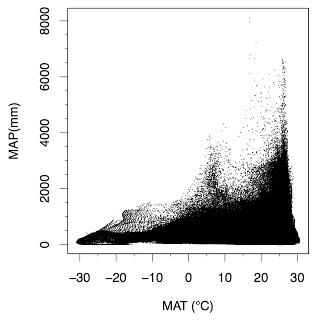Andrew Hendry critiques the ecosystem services argument for biodiversity preservation.
I suspect that weak and inconsistent relationships between biodiversity and ecosystem function are symptomatic of the reality that biodiversity also provides ecosystem disservices. Some species are just flat-out bad for clean water, productivity, nutrient cycling, and pollination. And, of course, many species are unequivocally bad for humans in general, most obviously a number of diseases. So perhaps we have, on the one hand, a positive relationship between biodiversity and good aspects of ecosystem function (services) but also, on the other hand, a negative relationship between biodiversity and bad aspects of ecosystem function (disservices).
Brian McGill thinks ecologists often use statistical methods they shouldn’t.
In my experience ecologists have a long list of “must use” approaches to statistics that are more complicated than simpler methods but don’t necessarily change the outcome. To me this is a machismo attitude to statistics – “my paper is better because I used tougher statistics”. It has a Red-Queen dynamic – eventually what starts as a signal of being superior turns into something reviewers expect in every paper. But often times with a little thinking, there is really no reason this analysis is needed in a particular case (the reviewer who is requiring it is so far removed from the development of the approach that they have forgotten why it is really used). And even if the more complex approach might be relevant, it can be very costly to implement but often have very little impact on the final results. Thus what started out as statistical machismo turns into wasted time required by reviewers.
John Morgan gives a little attention to the first step in the scientific process.
At any new site I visit, I have a little checklist of things I ask myself: how does the topography change? How does the overstorey change? How does the understorey change? How does the soil change? By running through this list, I can start to arrange the components of the landscape into some sort of order. My geomorphologist friend Neville Rosengren calls this ‘being able to read the landscape’. While he’s looking at rocks and landforms, such a concept is equally applicable to the vegetation.
